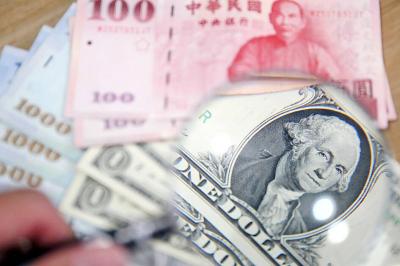By 2050 China will have eradicated poverty, established itself as a world power in science and lifted the average lifespan of its billion-plus citizens to 80 years, according to two blueprints for the future published last week.
Even by the standards of a country that has a passion for long- term economic plans, the targets -- which foresee the relocation of 500 million peasants to cities, huge investment in biotechnology and the addition of hundreds of millions more cars to the streets -- are ambitious, but give an indication of how the nation would like to see itself in the middle of the century.
They are likely to generate a mixed response in the outside world, where respect for China's success in raising living standards is mingled with fear that Beijing is emerging as a military rival to the US and an environmental menace to the planet.
The social projections are contained in the China Modernization Report 2006, drawn up by the country's leading research institute, the Chinese Academy of Sciences and released last Thursday.
GROWTH REQUIREMENT
If the country can maintain its current 9 percent rate of economic growth, it predicts the average income in China will rise to US$1,300 a month, about 10 times the current level.
In the past 25 years of expansion China has lifted an estimated 300 million people out of poverty, but there are still more than 80 million living below the government's poverty line of less than 668 yuan (US$83) a year.
By 2050, the institute predicts that nobody will have to subsist on such a minimum income and everyone will have access to social services.
It says the middle class will also enjoy an affluent lifestyle that only a small minority can currently afford. Half the population -- which will grow to about 1.5 billion -- will own their own car and be able to afford overseas travel.
The forecast is predicated on the transition of China from a predominantly agricultural society to a suburban, knowledge-based economy. This will entail moving 500 million rural dwellers into industrial cities, then 600 million city dwellers into high-tech suburban homes.
By 2050, 80 percent of urbanization will be completed, the report says.
DIFFICULT TARGETS
The authors admit the targets will be hard to achieve.
He Chuanqi, who headed the research team, told local reporters that China's economic situation is 100 years behind the US and there is only a 6 percent chance of his forecasts being realized.
He warned of problems emerging along with changing life styles and expectations, particularly because social change lags behind economic modernization.
A bigger threat is likely to be to the environment. China is already the world's second-biggest emitter of greenhouse gases.
If the predictions of a surge in car ownership and air travel are correct, it will far surpass the US as the major cause of global warming.
STATE COUNCIL REPORT
In a separate report, the State Council announced plans to boost investment in clean energy and nuclear power along with 14 other areas of scientific research. By 2020, it said, the country should be spending 2.5 percent of its gross domestic budget on research and development, double the current level.
By that time China would be one of the most advanced nations in the world in biotechnology and space exploration, fostering a "large number of world-class scientists and research teams," and making major breakthroughs in energy exploration, energy-saving technology and clean-energy technology.
In the military field, it called for increased spending and forecast "the development of modern weapons and informationization of the army to provide assurance for the safeguarding of national security."
Overall, it predicted a steady increase in new patents and groundbreaking scientific papers that would enable China to claim a place as a major power in science and technology by 2050.
It is far from certain these goals will be achieved, but a ream of statistics about the rapid and prolonged expansion of China's economy and scientific prowess is causing concern in Washington.
US CONCERNS
US President George W. Bush's recent announcement that the US will spend more on science and education is thought to have been at least partly influenced by such fears.
In 2003 Chinese universities saw 817,000 science and engineering students graduate -- about eight times the US tally.
The Pentagon also singled out China as the only country with the capability to emerge as a military rival.
US congressmen are warning that China's economy will overtake the US' by 2050.
With the political debate increasingly shaped by predictions of future power rather than current strength, crystal ball gazing has become a popular subject for normally staid academic publications, with the most optimistic forecasts coming from those closest to the government.

The US dollar was trading at NT$29.7 at 10am today on the Taipei Foreign Exchange, as the New Taiwan dollar gained NT$1.364 from the previous close last week. The NT dollar continued to rise today, after surging 3.07 percent on Friday. After opening at NT$30.91, the NT dollar gained more than NT$1 in just 15 minutes, briefly passing the NT$30 mark. Before the US Department of the Treasury's semi-annual currency report came out, expectations that the NT dollar would keep rising were already building. The NT dollar on Friday closed at NT$31.064, up by NT$0.953 — a 3.07 percent single-day gain. Today,

‘SHORT TERM’: The local currency would likely remain strong in the near term, driven by anticipated US trade pressure, capital inflows and expectations of a US Fed rate cut The US dollar is expected to fall below NT$30 in the near term, as traders anticipate increased pressure from Washington for Taiwan to allow the New Taiwan dollar to appreciate, Cathay United Bank (國泰世華銀行) chief economist Lin Chi-chao (林啟超) said. Following a sharp drop in the greenback against the NT dollar on Friday, Lin told the Central News Agency that the local currency is likely to remain strong in the short term, driven in part by market psychology surrounding anticipated US policy pressure. On Friday, the US dollar fell NT$0.953, or 3.07 percent, closing at NT$31.064 — its lowest level since Jan.

The New Taiwan dollar and Taiwanese stocks surged on signs that trade tensions between the world’s top two economies might start easing and as US tech earnings boosted the outlook of the nation’s semiconductor exports. The NT dollar strengthened as much as 3.8 percent versus the US dollar to 30.815, the biggest intraday gain since January 2011, closing at NT$31.064. The benchmark TAIEX jumped 2.73 percent to outperform the region’s equity gauges. Outlook for global trade improved after China said it is assessing possible trade talks with the US, providing a boost for the nation’s currency and shares. As the NT dollar

The Financial Supervisory Commission (FSC) yesterday met with some of the nation’s largest insurance companies as a skyrocketing New Taiwan dollar piles pressure on their hundreds of billions of dollars in US bond investments. The commission has asked some life insurance firms, among the biggest Asian holders of US debt, to discuss how the rapidly strengthening NT dollar has impacted their operations, people familiar with the matter said. The meeting took place as the NT dollar jumped as much as 5 percent yesterday, its biggest intraday gain in more than three decades. The local currency surged as exporters rushed to